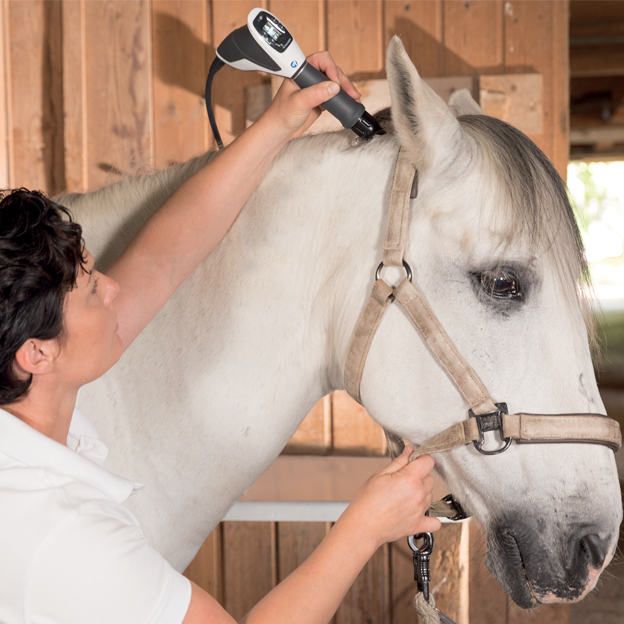The Power of Equine Therapy for Stress And Anxiety, PTSD, and Psychological Recovery
The Power of Equine Therapy for Stress And Anxiety, PTSD, and Psychological Recovery
Blog Article
Examining the Performance of Laser Therapy in Horse Treatment for Injury Recovery
The assessment of laser treatment's efficiency in equine injury rehabilitation depends upon several variables, consisting of recovery time, discomfort reduction, and tissue regrowth. Medical studies suggest significant improvements in conditions like tendonitis and osteo arthritis, credited to improved cellular feature and raised ATP production. Veterinarians frequently observe superior outcomes with laser therapy compared to traditional approaches, placing it as a vital element in equine care. The need for continuous monitoring and personalized treatment strategies can not be overstated. What details scientific evidence sustains these cases, and exactly how do vets apply these procedures in practice?
Understanding Laser Therapy
Laser therapy has actually ended up being an essential device in vet medicine, particularly in the treatment of equine conditions. Understood for its non-invasive nature and efficiency, laser therapy entails the application of particular wavelengths of light to boost cells repair service and decrease inflammation. This healing method is significantly preferred for its ability to increase the recovery procedure in horses struggling with a selection of musculoskeletal injuries and chronic conditions.
The primary mechanism behind laser treatment is its capability to improve mobile functions. In addition, laser treatment advertises vasodilation, improving blood flow and oxygen distribution to damaged cells, therefore quickening recuperation.
In equine medicine, laser treatment is specifically beneficial for conditions such as tendonitis, osteoarthritis, and wound healing. The technique is lauded for its pain-relieving homes, enabling steeds to restore mobility and function extra rapidly. Vets additionally appreciate its marginal negative effects compared to other treatment techniques, making it a trustworthy and secure option for equine care.

How Laser Treatment Works

Upon absorption, these photons activate a series of biochemical changes, improving mitochondrial function and causing increased adenosine triphosphate (ATP) manufacturing. This increase in ATP accelerates mobile metabolic rate, promoting cells repair service and regrowth. In addition, laser therapy regulates inflammatory actions by influencing cytokine levels and decreasing oxidative stress, thereby relieving discomfort and swelling.
One more considerable aspect of laser treatment is its role in boosting microcirculation. The therapy promotes vasodilation, boosting blood circulation and oxygen delivery to damaged cells (Equine Therapy). This assists in the elimination of cellular debris and supports the spreading of fibroblasts and collagen synthesis, important for injury healing
Scientific Proof
The effectiveness of laser therapy in equine therapy has been confirmed with numerous scientific research studies, showcasing its therapeutic potential across a variety of conditions. A number of controlled tests and observational research studies have documented substantial enhancements in tissue repair, pain decrease, and general rehabilitation timelines. For example, a research carried out by Turner et al. (2012) showed that horses treated with low-level laser therapy (LLLT) for ligament Source injuries showed sped up healing contrasted to those receiving traditional therapies. The study highlighted a marked reduction in swelling and boosted collagen development.
Likewise, research study by Johnson and colleagues (2015) concentrated on equine muscle injuries, disclosing that laser treatment dramatically quickened muscular tissue fiber regeneration and reduced muscular tissue rigidity. These searchings for were proven by histological analyses showing enhanced muscle tissue organization. In addition, medical evaluations have actually shown that laser therapy can ease persistent conditions such as osteoarthritis. A study by Smith et al. (2018) reported that horses with osteoarthritic joints experienced noteworthy pain alleviation and raised series of motion adhering to a program of laser therapy sessions.
Vet Insights

Veterinarians also value the flexibility of laser treatment. It can be utilized for a wide range of conditions, from superficial wounds to much deeper bone and joint injuries. Dr. Emily Brown highlights its utility in dealing with problems like tendonitis and osteo arthritis, where conventional treatments often fall brief. She aims out learn the facts here now that laser treatment can be tailored to the particular demands of each steed, guaranteeing ideal results.
In addition, veterinarians value the capability to integrate laser therapy with various other therapy modalities. This multimodal strategy can enhance general treatment efficacy, giving an extensive remedy for equine rehab. Such recommendations from experienced professionals highlight the expanding acceptance and application of laser treatment in equine medication.
Practical Considerations
A key element of executing laser therapy in equine therapy involves understanding the sensible considerations that ensure its effectiveness and security. Most importantly, it is critical to choose the appropriate laser device, as various types differ in wavelength, power, and infiltration deepness. Equine Therapy. Vets need to be fluent in these parameters you can try this out to tailor treatment protocols efficiently to every injury kind
Moreover, the regularity and period of laser therapy sessions need mindful preparation to make best use of therapeutic benefits while reducing any kind of possible unfavorable effects. Consistent tracking of the horse's response to therapy can direct required changes in the treatment regimen. Developing a safe and regulated atmosphere during treatments is also vital to prevent unexpected direct exposure to laser emissions, which could hurt both the horse and the handler.
Educating and accreditation of personnel providing laser therapy are paramount to make sure proper method and to maintain safety and security criteria. In addition, preserving accurate records of each session, consisting of laser settings and observed outcomes, is crucial for assessing the total effectiveness of the treatment and for making data-driven decisions.
Verdict
Laser treatment has actually arised as an efficient method in equine injury rehab, providing significant advantages in healing time, discomfort relief, and tissue recovery. For optimal results, continual monitoring and individualized therapy methods remain essential in leveraging the full possibility of laser therapy in equine care.
Report this page